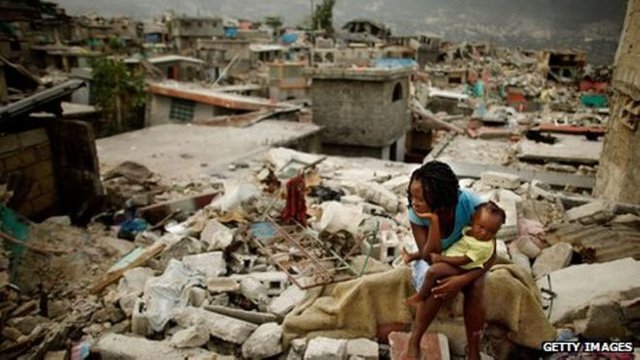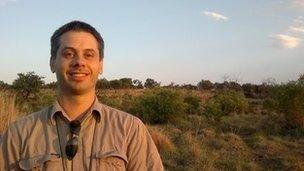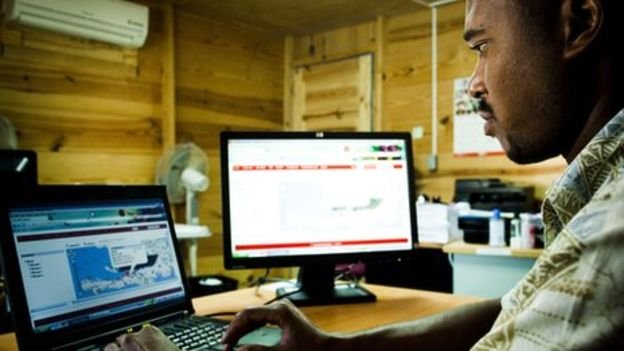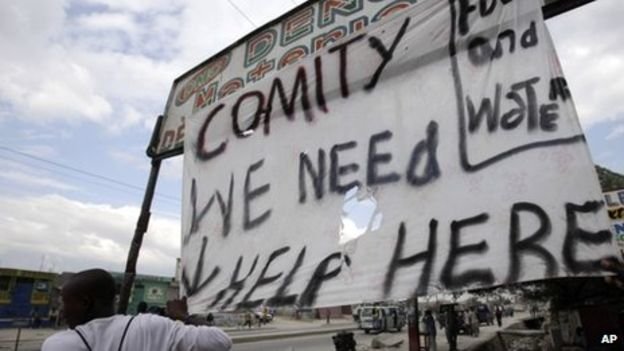
When the British government delivered emergency aid to people fleeing Islamic militants in northern Iraq last month, one of its primary concerns was how the refugees might charge their mobile phones.
Alongside tents and drinking water, RAF planes dropped more than 1,000 solar-powered lanterns attached to chargers for all types of mobile handsets to the stranded members of the Yazidi religious community below.
It is the first time the lanterns have been airdropped in such a relief effort, but humanitarian workers say it is part of growing efforts to develop technology designed to make a difference in disaster zones.
In 2010, Dr Paul Gardner-Stephen, a computer systems researcher at Flinders University in Australia, was driving to work in his car when he first heard radio reports of the devastation of the Haiti earthquake, more than 10,000 miles away.
With roads blocked, infrastructure reduced to rubble and mobile networks down, he realised something needed to be done, and quickly.
"You typically have about three days to restore the communications before the bad people realise the good people aren't in control any more," he says.
His solution was to develop the technology that allows mobile phones to communicate directly with each other even where there is no network coverage, or when mobile masts have been knocked out of action - a system known as "mesh networking".
His Serval Project work means users can send text messages, make calls and send files to other users nearby, creating a mobile network through a web of users.
It is just one example of the dozens of technologies developed in the wake of Haiti to help relief efforts in disaster zones.
"There's plenty of technology for rich white men," Dr Gardner-Stephen says. "It's the rest of the world that we need to help."

Dr Paul Gardner-Stephen is part of a growing band of researchers working on technological solutions for disaster relief efforts
HAITI IMPACT
Another project born out of the Haiti disaster was the Trilogy Emergency Relief Application (Tera), a mass text messaging programme now being rolled out by the Red Cross in 40 countries around the world.
It allows aid workers to navigate a disaster-hit country from a computer screen, identify all the mobile phones being used in a given area, and blast them all with urgent 140-character updates with a click of a button.
It was first developed in Haiti with the help of local mobile network operators, allowing messages with advice on water sanitation and medical aid to be distributed to millions of people across the Caribbean country.
"I don't know of any other means of communication where you could reach that many people, that quickly and that directly," says Sharon Reader, a communications adviser for the International Red Cross currently working on setting up the Tera system in east Africa.
"It's not like the radio when someone has to be switched on and listening. It's a buzz in their pocket and they're going to be able to see that information immediately."
She says the sheer volume of mobile phones now sold in developing countries makes text messaging the ideal way to communicate.
Global mobile subscriptions are expected to reach seven billion this year according to the UN, with developing countries in Africa and Asia seeing the fastest growth.

The Tera system allows aid workers to text millions of mobile users with a click of a button
CROWD SOURCING CHALLENGE
The Tera project also allows disaster victims to send messages back to aid agencies, telling them where they are and what they most urgently need.
That makes it similar to other recently developed applications designed to harvest the huge volumes of information generated in the immediate aftermath of a sudden-onset disaster, like a war or earthquake.
The Ushahidi project was used in Haiti to crowd source information from the Haitain population, using social media sources like Twitter and Facebook alongside text messages, with information visualised on an online map for humanitarian agencies to use.
Similar platforms became popular following the 2011 earthquake and tsunami in Japan.
The Japanese are the third biggest users of Twitter in the world, and the network became a crucial communication method and information source, typically faster and more effective than mainstream media.

Crowd sourcing is being used to harvest information from those worst-hit by disasters
Several similar projects are being developed, including those through the Digital Humanitarian Network and the Standby Taskforce - organisations that mobilise volunteers with expertise in monitoring social media, translating messages to and from local dialects, and creating crisis maps around disasters.
Kim Scriven is the manager of the Humanitarian Innovation Fund, a government-backed agency set up in 2011 that supports innovative research in humanitarian aid.
He says the trying to harvest and filter the vast amounts of data generated by a disaster or conflict is "the big nut that people are trying to crack", with the real challenge being to turn all of that data into information that humanitarian agencies can actually act on.
TECHNOLOGY SEA-CHANGE
"There are lots of people working on it, but in my view that hasn't happened yet," he says.
Alongside the smaller start-ups typically supported by Mr Scriven's fund, the bigger technology players are beginning to show more interest in humanitarian applications for their technology.
Google recently unveiled its drone programme, which it suggests could be used to airdrop aid into disaster zones.
Last year, the search giant unveiled Project Loon - a plan to deliver internet connections to hard-to-reach places through a network of high-altitude balloons.
Both are in the early stages of development. But aid workers say we are seeing a sea-change in the role of technology in humanitarian relief, and how it can empower those affected by the disaster they find themselves in.
"[Disaster relief] is no longer about just dropping items on people and leaving them to it," says the Red Cross's Sharon Reader.
"There has been a huge shift in the aid world in seeing people who are affected by a crisis not as victims but as people who have the capacity to look after themselves."
--REPORTED ON BBC NEWS
24 SEPTEMBER 2014
Hi! I am a robot. I just upvoted you! I found similar content that readers might be interested in:
https://www.bbc.com/news/technology-29149221
Downvoting a post can decrease pending rewards and make it less visible. Common reasons:
Submit